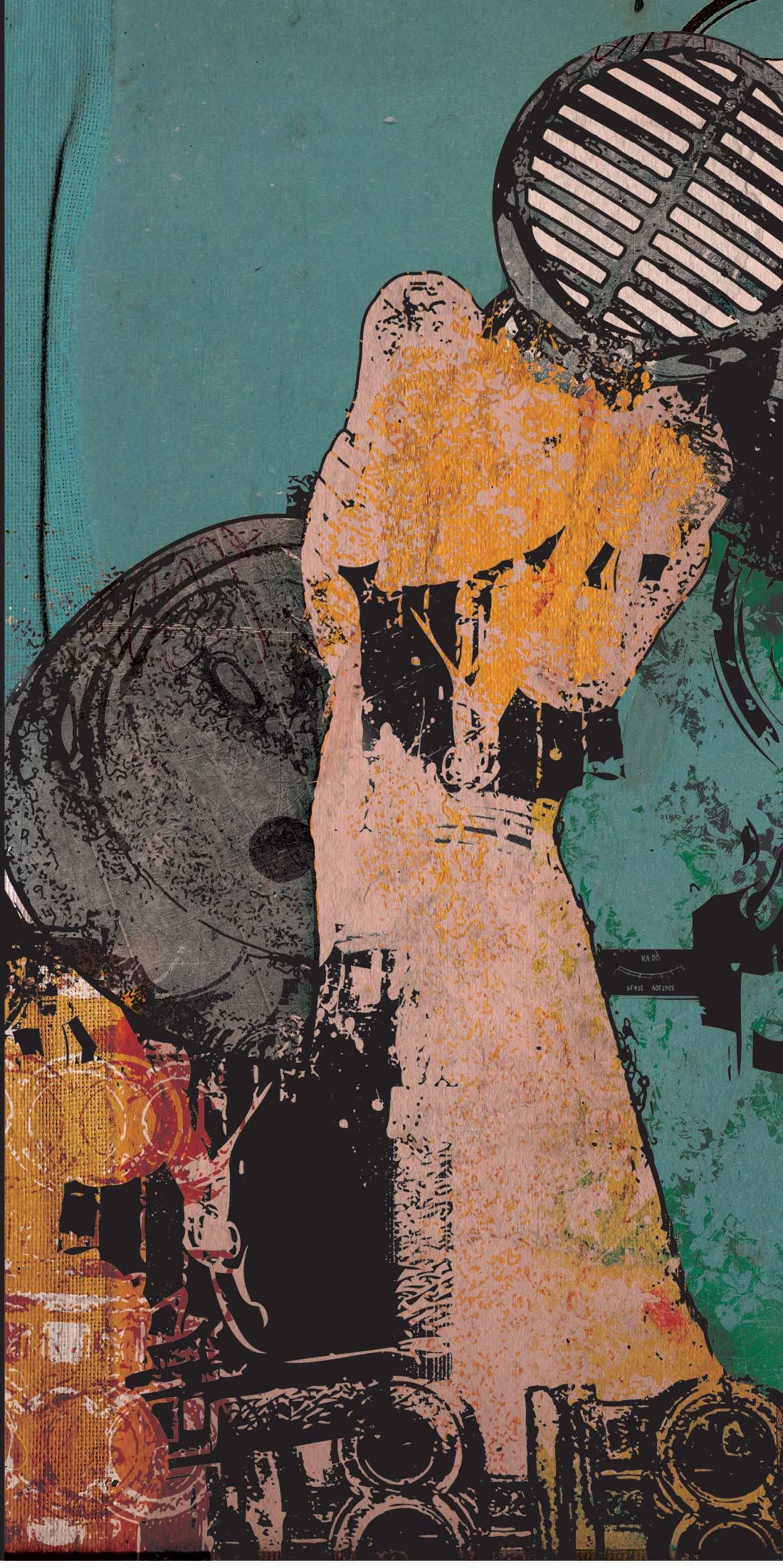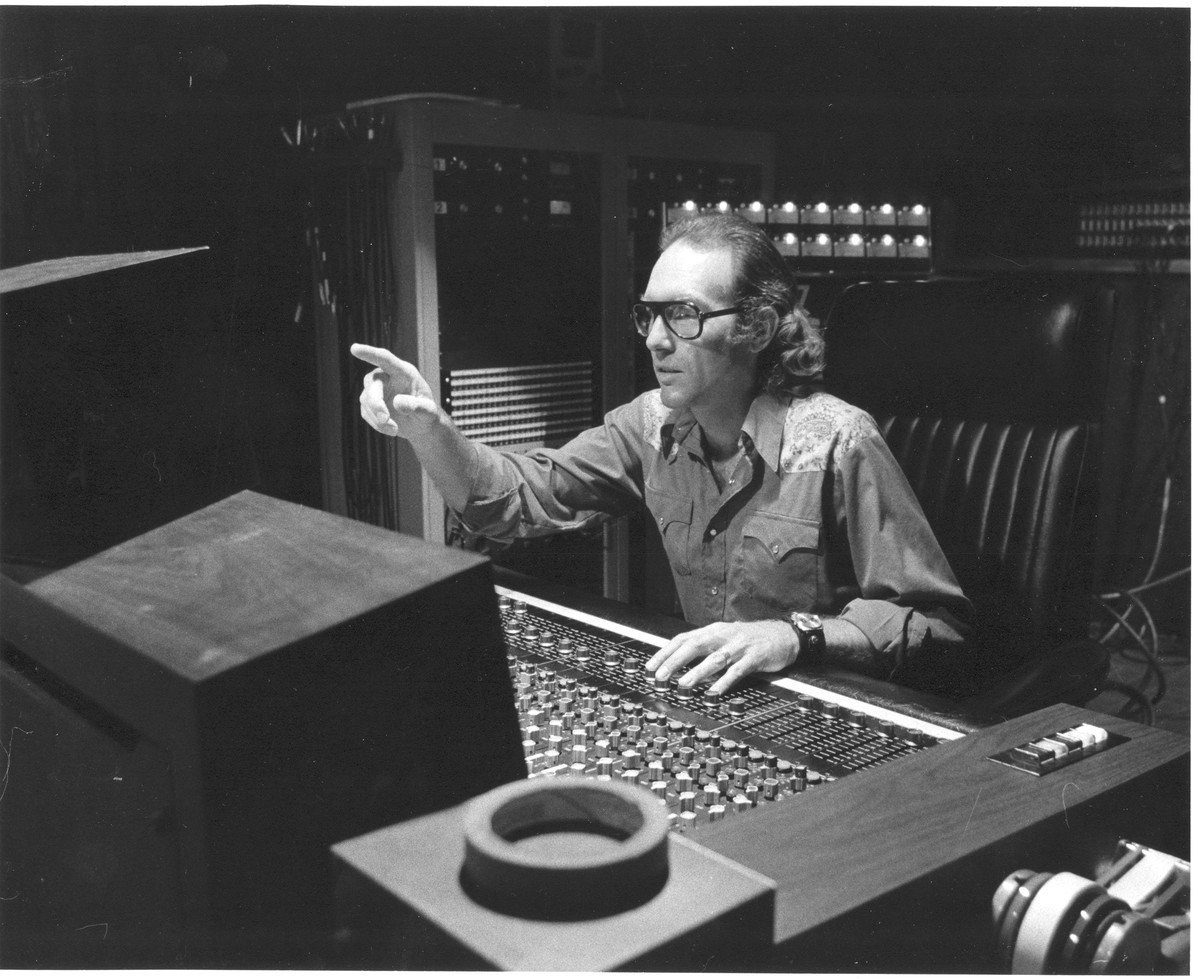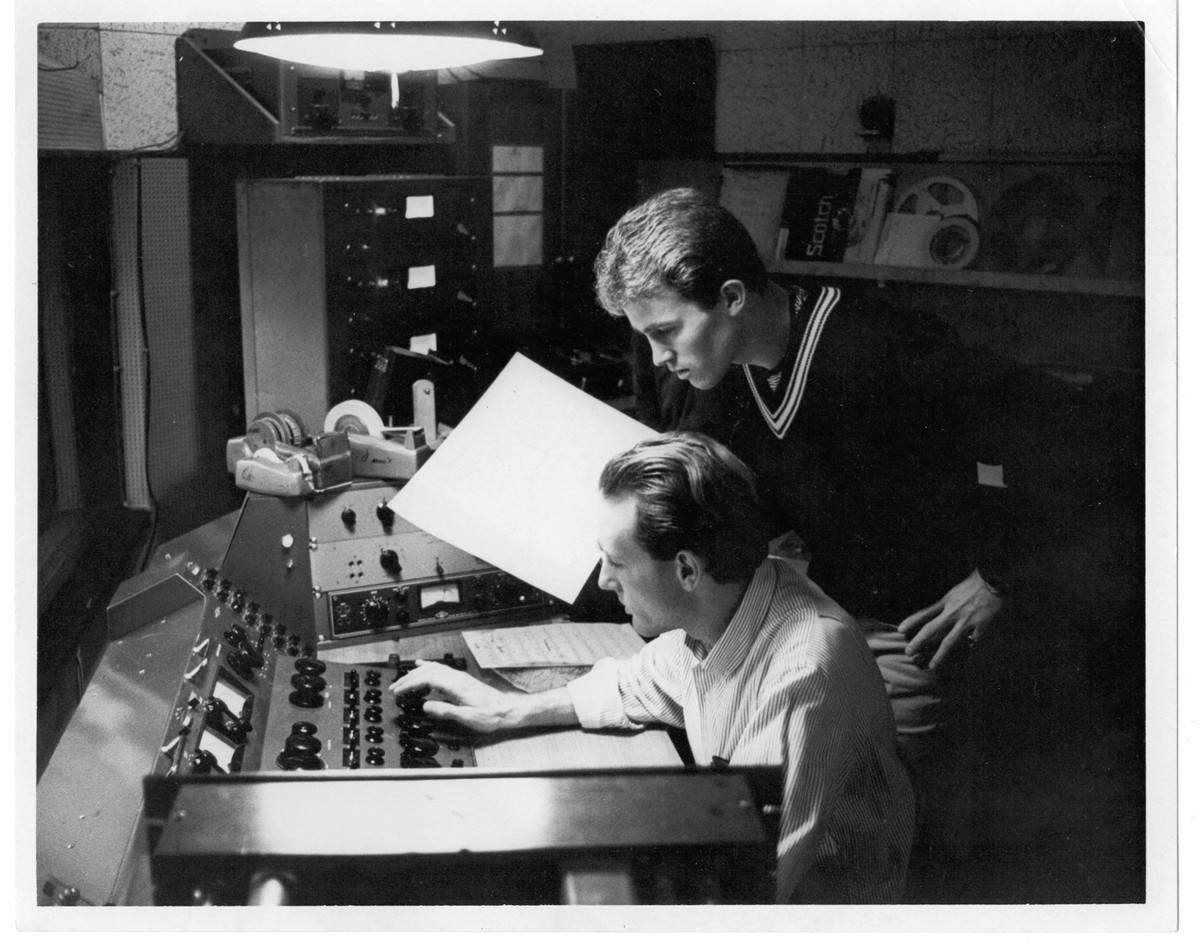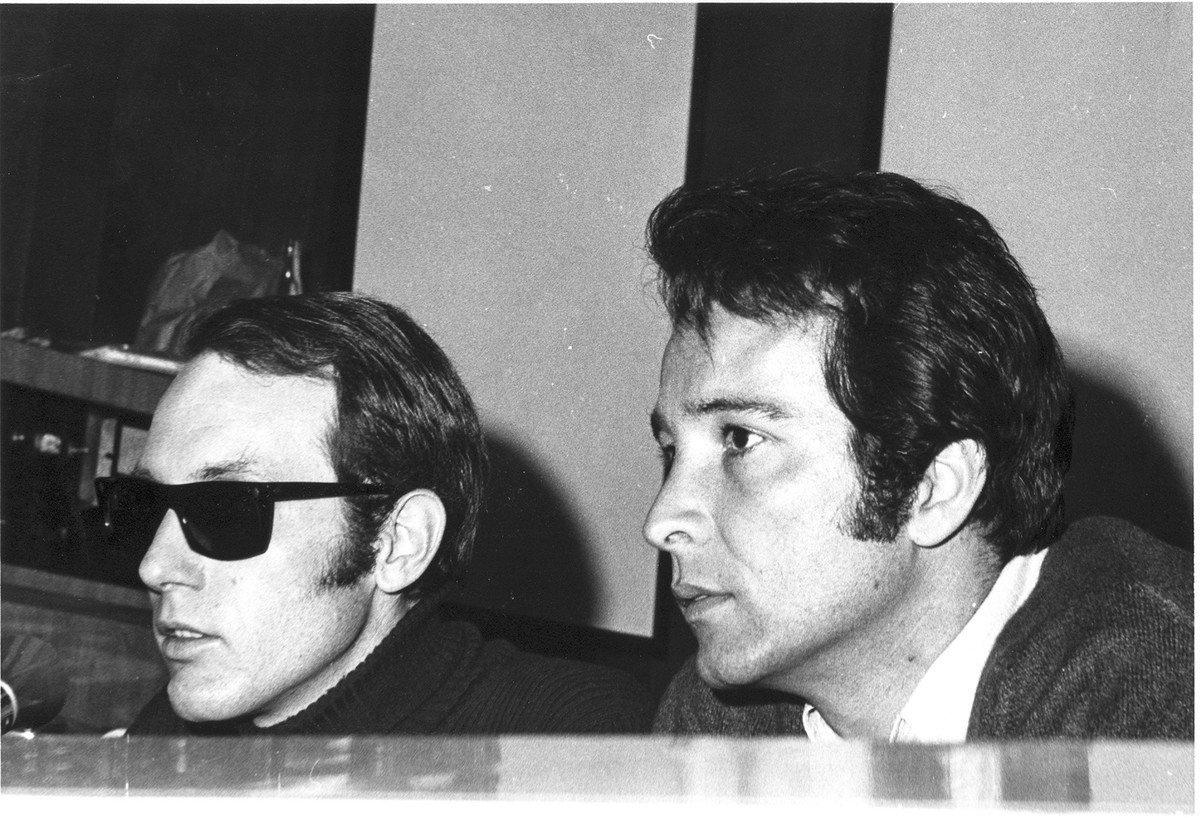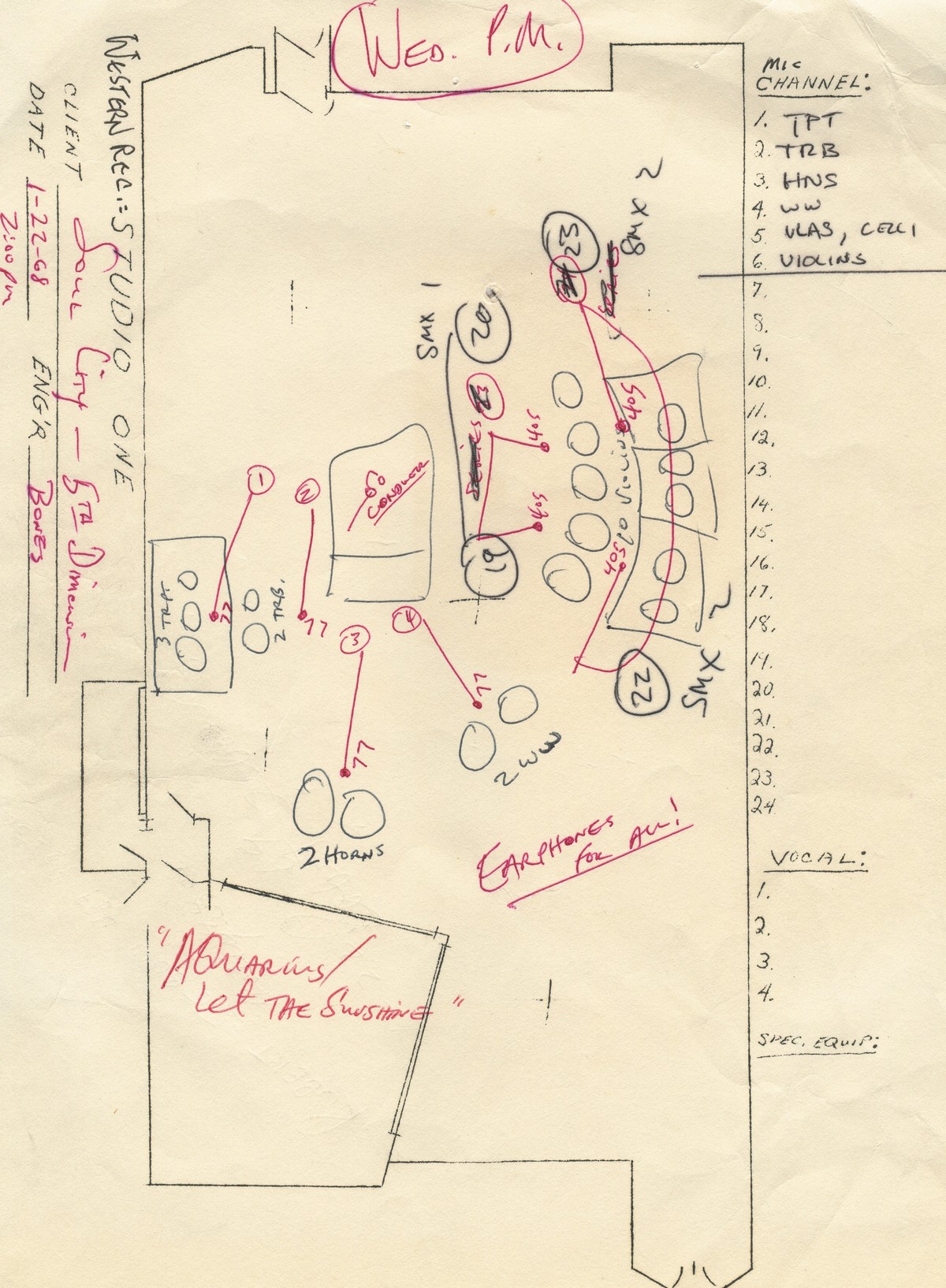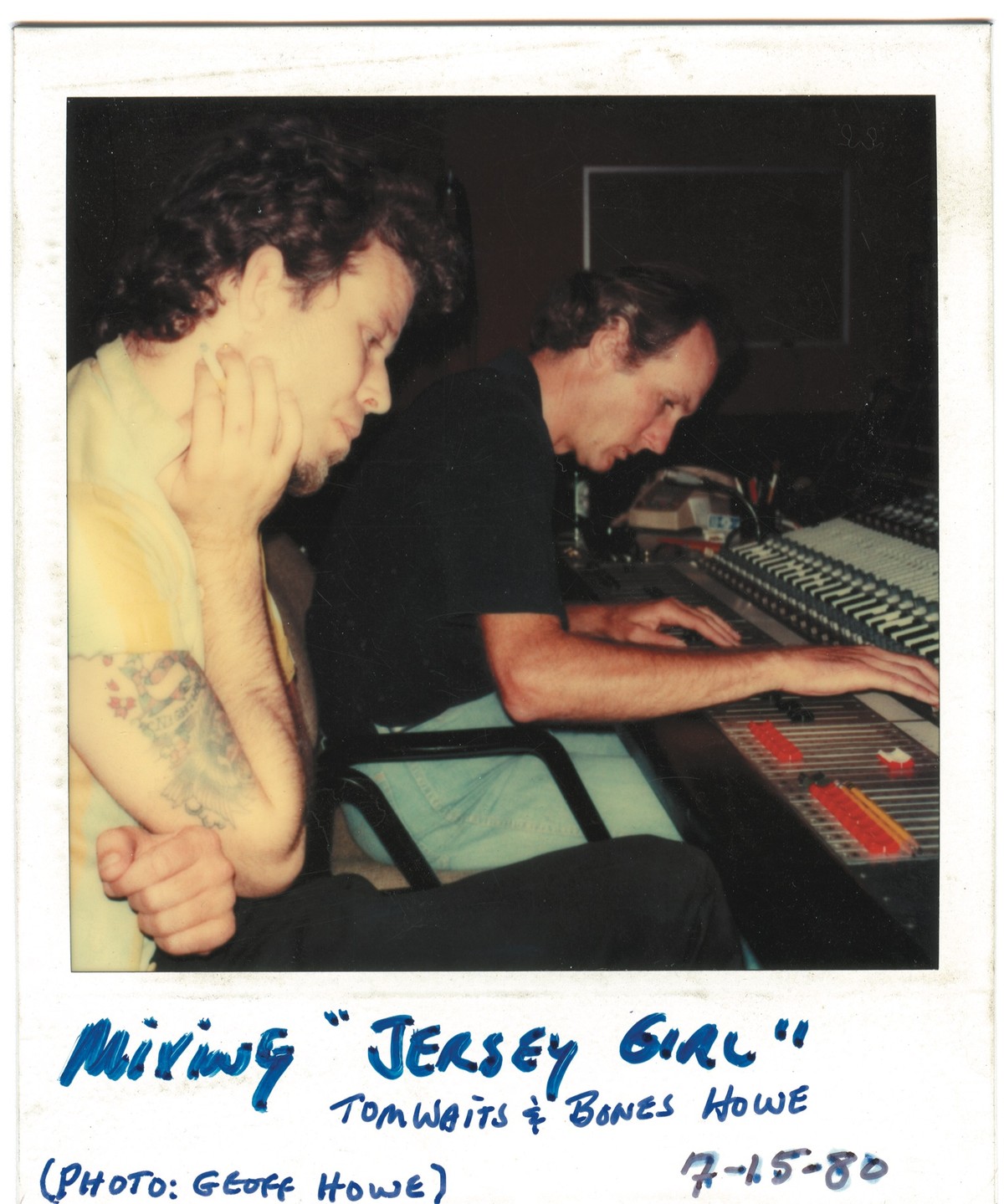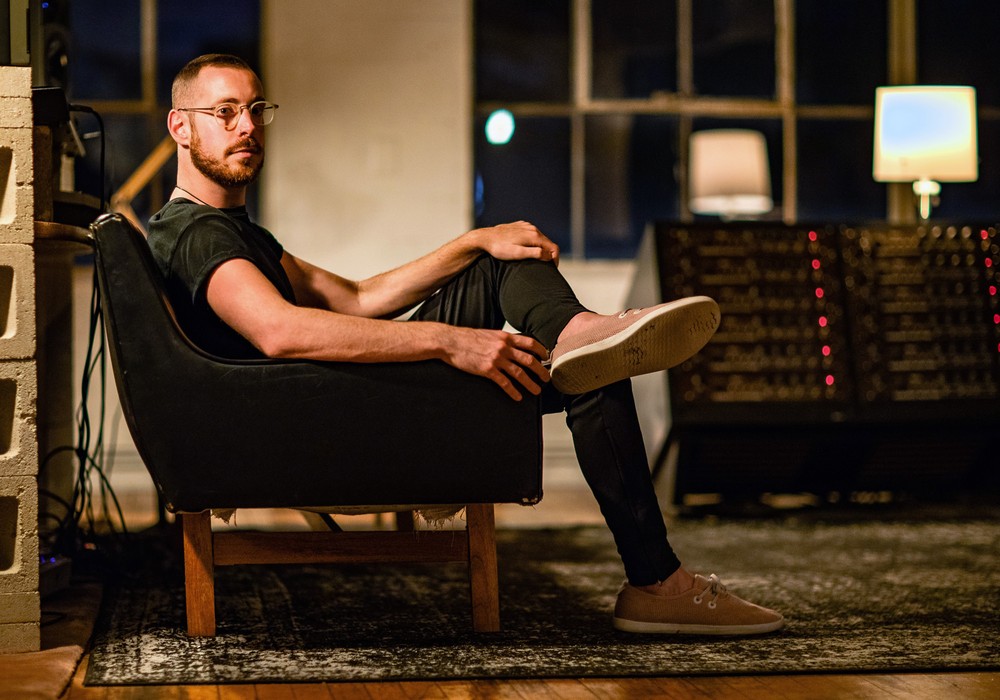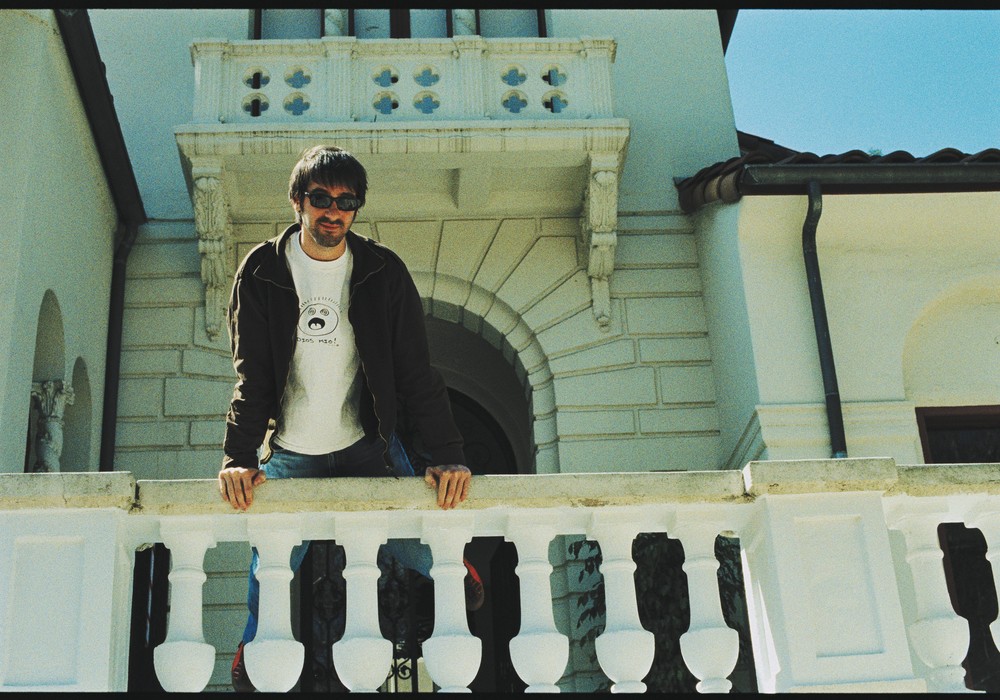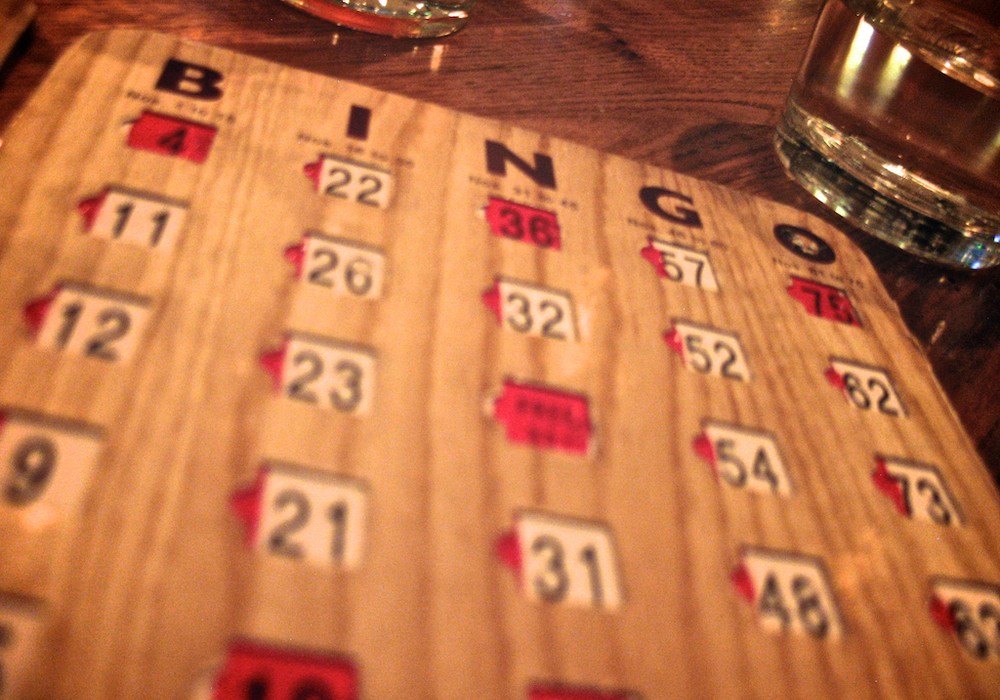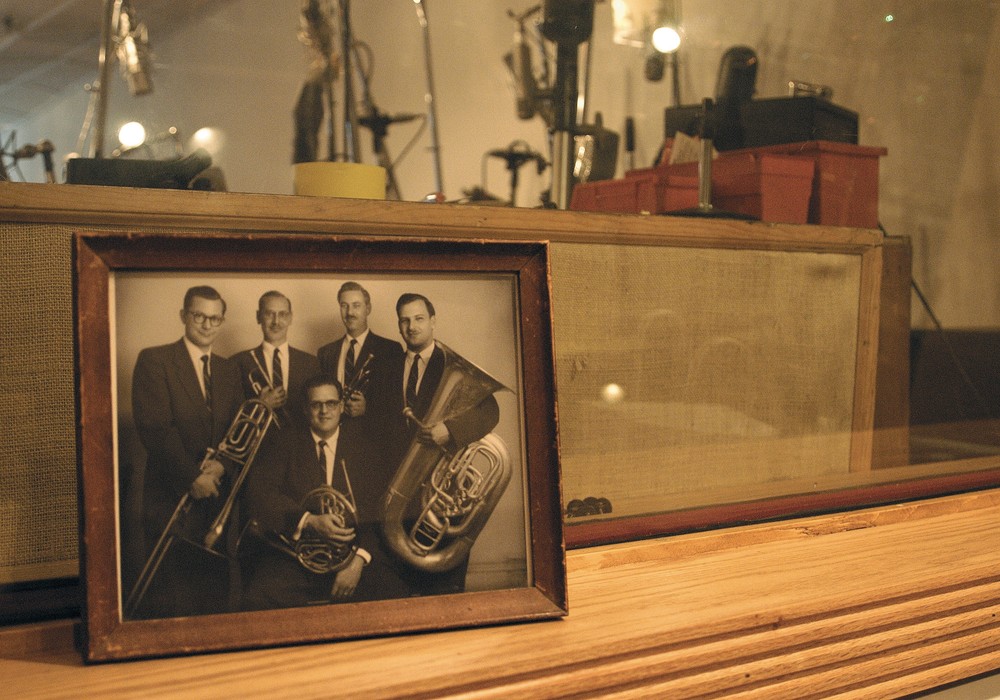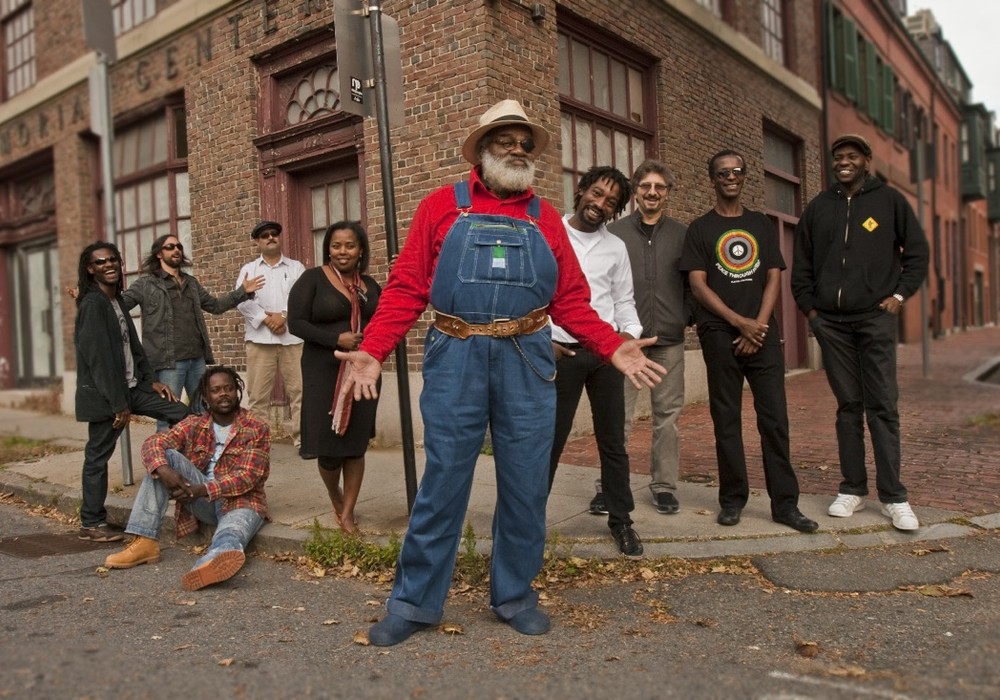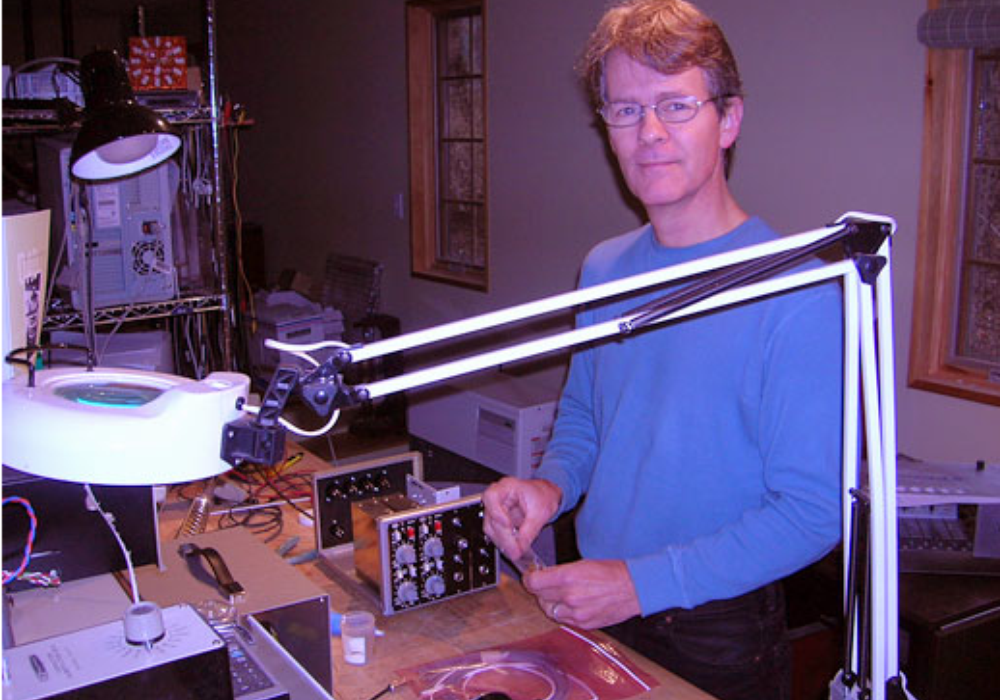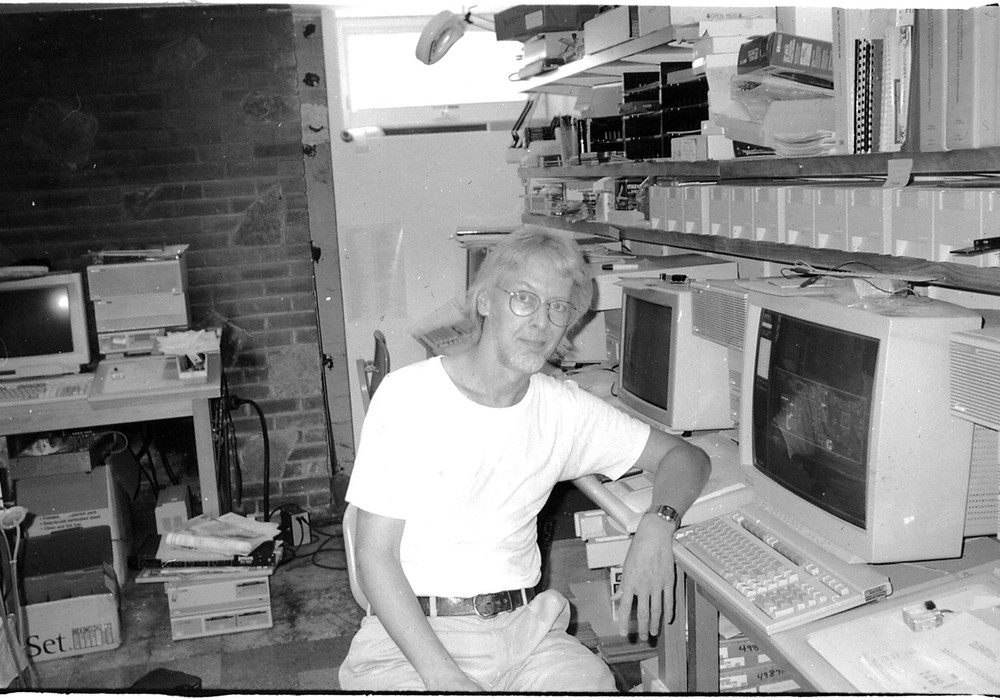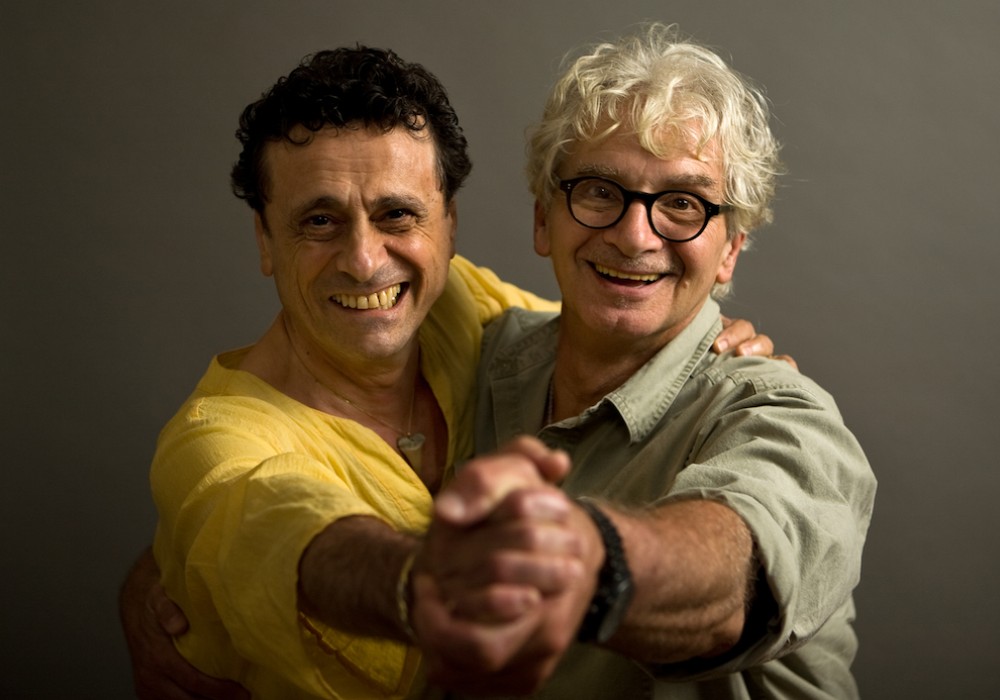You could argue that these days, the title of "living legend" is thrown out as indiscriminately as Mardi Gras beads. However, in the case of engineer/producer Dayton "Bones" Howe, the title is completely deserved. Having engineered and produced some of pop music's biggest classics, Howe is the real deal — a genuine studio hall-of-famer with more than 20 gold and platinum records to his credit. His discography is stunning, featuring names like Frank Sinatra, Ella Fitzgerald, Ornette Coleman, Elvis Presley, The Turtles, The Association, The Monkees, Jan and Dean, Ahmad Jamal, The Mamas and The Papas, The5th Dimension and even the very left-of-center Tom Waits.
How did a kid from Sarasota end up cutting tracks in L.A.?
During college at Georgia Tech I was touring the country as a jazz drummer. One day on tour I was hanging out with [famous jazz drummer] Shelly Manne. He suggested I move to L.A. and try combining my talents as a drummer and an electronic engineer, and the light went on! Since I figured I was about to be drafted into the Korean War, I'd go to L.A. and get a job first. If you had a job when you were drafted your employer had to hold that job for you until you got back. So I got out to L.A. and got a job at Radio Recorders at 7000 Santa Monica Boulevard. The facility's still there. I started as an apprentice — setting up mics, getting coffee and all that junk you do.
When was that?
I got my first paycheck from Radio on April 14, 1956. I still have the check stub.
You arrived at Radio Recorders at the same time Elvis was tracking hits there.
Everybody wants to know what Elvis was like! [laughs] I was in several of those sessions, like "Teddy Bear," with [engineer] Thorne "Thorny" Nogar. I hated Elvis up until then 'cause I was a jazz guy. I thought he was a country singer who jumped around a lot. I remember when I was a kid living in Sarasota he'd come around with those road-shows that Colonel Parker used to do. I remember going to see a movie at The Florida Theater in Sarasota, where I got stuck having to sit through Elvis. Later I found myself in the studio with him, and then even later I was on the TV show [as co-producer and music director]. Bob Finkel, the executive producer with NBC, came to us and said, "You guys gotta help me out with this one. The Colonel has talked NBC into doing a Christmas special, and Elvis is gonna sing twenty-four Christmas songs." So we went in to the meeting with these people and [producer] Steve Binder and I managed to corner Elvis in a room by himself. Steve said, "Elvis, it's a shame nobody ever gets to see you the way you really are. I mean, you've done Ed Sullivan and a lot of TV, but it's too bad we can't do a special where you do the rock songs you're famous for, and some of the new songs. It'll be in-color and state-of-the-art sound." Elvis talked The Colonel into it. So production began, and there I was with Elvis and I said to him, "You probably don't remember me but I worked on 'Teddy Bear' with Thorny Nogar," and Elvis said, "Oh, Thorny was the greatest!" — so we were immediately bonded together from the years before. I have to hand it him, Elvis was a real trooper. He came to the office every day and worked with the guys who were writing the script. He worked with the guys who were writing the songs. He was amazing. He rolled up his sleeves and became part of the production crew. He came to every rehearsal, he rehearsed with the dancers. He really loved doing that work. The night after taping he came to the wrap party and he danced with this woman who was the script supervisor. I'm sure she's still dreaming about it.
Does it surprise you that "Elvis Incorporated" is such a huge money- making machine nowadays?
It doesn't surprise me because I'm part of that now. I'm constantly getting calls for interviews. I get calls from England to be on radio and TV. There's a guy who does a radio show from Graceland who plays all Elvis, and he calls me when he plays a song I was on and asks me to tell the listeners what happened during the session. I refuse to go down there and be part of that sideshow. It's a carnival. The Colonel was a carnival barker and Elvis' life became a huge carnival. It's a money machine now and it has nothing to do what Elvis was or what he did or how he changed country and R&B into the rock and roll that it became.
You also did some sessions at [United] Western Recorders with The Mamas & the Papas and others.
In the halls of Western Recorders, on any afternoon or night, you'd bump in to Brian Wilson, Lou Adler or [Thomas] "Snuff" Garrett. Everybody hung around everybody else's sessions. Nobody said, "You can't come in my session." First of all, Studio Three at Western was a cupboard — the size of somebody's bedroom. The reason it sounded like it did was because you learned to position the players and the microphones so that everything sounded great. In the '80s, when I was working at Columbia Pictures, some drummer from a major rock group at that time called me on the phone. I was an executive vice president at Columbia Pictures running the music department. He names some record I did, and asks me, "How did you get that drum sound? We're doing a record and I can't get that drum sound." I said, "First of all you have to go to Studio Three at Western! Set your drums up in there. I'll tell you what the set up was, but it's the room!" It was [Sony] C-37As and all that stuff — everybody was jammed in tight together, so the sound you had was the sound of the instrument plus the sound of the room plus the open mics around it. There were no directs in those days — it was a conglomerate sound of everybody in there together, not instruments sticking up like a picket fence. That's why all those records have that wonderful sound.
Nowadays every kid with a laptop computer can be a "recording engineer."
I think one of the great losses is that when people began getting home studios — especially with the advent of Pro Tools — and started making records in their living room or garage or wherever — it separated people. They weren't all thrown together like we were when we all worked in studios together. Not only was there a lot of recording knowledge that traded hands, there was a tremendous amount of musical influence that went both ways. It gave you the opportunity to do all kinds of things. It's the kind of basic training you just don't get anymore.
And you worked in the major studios that cost millions to build and equip.
I said to [famous studio-owner] Wally Heider, "Once you get into the studio business, you're in the arms race!" The minute the Record Plant gets a new console you're gonna have to keep up with it or go out of business. And that's the way it was. But what it was about — it was about the excitement of having these great new studios with great new equipment. It was 8 to 16, 16 to 24 tracks — all this wonderful advancement in technology. It was for all of the great musical ideas that were going on. I remember Crosby, Stills and Nash were in Heider's Studio Three all night long before I returned in the morning to work with The 5th Dimension. David Crosby said, "Put the tape back on. I want to play this for Bones," and it was "Suite: Judy Blue Eyes" before it was finished. It was just the track and vocals. You'd walk in to a studio and people would say, "Hold on a second. I want to play you something!" It was a big mix of musicians and producers and engineers all influencing each other.
You did some great sessions at Bill Putnam's United Western.
I did tons of sessions in Studio A because I worked there for a year and a half before I went independent, then I worked there after [going independent]. I recorded Sinatra, Bobby Darin, Mel Torme...
The famous reverb chambers...
Right! Engineer Larry Levine called me up and said Philip [Spector] wants to do a record in a big studio and have everybody performing together — the singer live, all the strings. At Gold Star he had to do everything in sections because the room was too small. So Larry came over and says, "The first thing I'm going to have to show you is how we get The Wall of Sound." And the Wall of Sound was — it sounds childish now — you take the live sound, you delay it with a 7 1/2" reel of tape, then you send it to the echo chamber, then you mix it with the live sound. You know, it was just echo stuff. Instead of using what we called "tape-reverb" in those days, he was putting the tape [delay] ahead of the chamber while the live sound was going in to the chamber. It just lengthened it, that's all. If you mixed it right, you got that huge sound. The trick was to get it all rolling without getting howling feedback. It made the chamber like an instrument of its own. It was very simple. Everybody else wanted to delay the sound coming back from the chamber. Philip was smart. He delayed the sound going into the chamber.
How do you feel about modern DAW technology?
I've used Pro Tools. Later in my career I was doing a lot of music for film, and a lot of the film editors were the first guys to get Pro Tools. I look back to editing jazz records with all those short pieces of tape — before there was even a [splicing] block — with scissors and splicing tape, and I think, "God, it would have been so much easier to use Pro Tools where you can see the waveform!" We got good at cutting tape because everybody did it back then. Now you just fire up the Mac!
Was there any one piece of gear you always used back then?
My favorite mic was the [RCA] 77-DX, and I used it for vocals on everything I did. Years later I tried to find those mics and only a couple of people had them. They wanted a lot of money to rent them. Ribbon mics were amazing for brass, saxophone and vocals. I was the first guy to use condensers on rhythm. I used the [Neumann/Telefunken] U47 on bass and the Sony [C-37A] for overheads.
The Neumann U47?
Do you young guys even know the U47?
People pay huge money for them now.
I'll bet they do! When Telefunken arrived, the U47 meant there was finally going to be "concert hall realism." So I'm in Studio One at Radio Recorders, which was famously known as "The Annex," and this guy was making this big band instrumental record. He says, "I want you to boom the '47, and I'm going to stand on the podium. I want you to hang it down so that the capsule is right over my head, 'cause I've got the band sounding perfect from where I am. Then shut off the other mics! This is going to make the perfect recording!" So I shut everything down and open up the '47, and of course it sounds like shit. He says, "What's wrong? It sounds like an echo-y jumble!" I said, "That's the room and all the reflections. When you're out there your brain is telling you, 'Don't listen to all those reflections off the wall.' When you're listening, your brain focuses on the music and ignores the reflections. The U47 microphone doesn't know how to do that!" Now this was mono, of course, and at that time, the argument for stereo was not to bounce things from one side to the other — like they did with those silly percussion records that they made at the beginning of stereo — the object is to use the depth that you get from a stereo recording to enhance the image that's coming out of two paper cones, instead of one. Once you have that philosophy in mind, the rest is easy.
I want to bring up a specific track that you get asked about a lot, but it's an astonishing recording with its use of stereo and reverb: The Mamas & the Papas' "California Dreamin'." Where was that recorded?
Studio Three at Western.
And that's the famous Bill Putnam chamber?
Yeah, that's the chamber. The vocals are double-tracked on top of each other.
That reverb is so resonant and lush.
Oh yeah. First of all, you've got the chamber. You're making the record as you're doing it, not saying, "Don't worry about that. We'll do it in the mix." The mix, big deal, it was four tracks or three tracks or whatever. The records were all done as if they were being made live, even though we did mix them later. The Mamas and Papas was 4-track 1/2 inch: two vocal tracks and two tracks of "track." Track 1 was empty, track 2 was guitars and keyboards, track 3 was empty, track 4 was bass and drums. Then we did the first generation of vocals on tracks one and three. Then we would go four to four [copying from a 1/2" 4-track machine to a second machine] copying the rhythm section straight across on two and four, and while we were copying over we'd add the next layer of vocals.
So you overdubbed at the same time you were bouncing?
Right, like we'd ping-pong tracks from track one to track three, while adding an instrument. It was always like solving a puzzle. Adding layers and opening up tracks. Ways of creatively devising how to make the record was as much fun as making the music.
Was the gorgeous reverb on "California Dreamin'" printed along with the recorded track, or added in the mix?
The chamber was a mono acoustic chamber. The echo [reverb] was added on both the original vocal passes and the overdubs. I think this did cause some phasing effect in the echo. The original and final overdub masters were on 3-track: girls left, band center, guys right. I may have added some echo in the mixes but it wouldn't have been much. There were no stereo singles — there was no stereo radio — so the original 45s were just mono. [Producer] Lou [Adler] wasn't interested in making stereo records so he left the mixes on the stereo LP to me.
I'm guessing that by the time you got the final 3-track or 4-track finished you could push up the three or four faders on the console to zero and that would pretty much be the final mix.
That's exactly right.
Let me ask you about your work with The 5th Dimension. iTunes has a pre- programmed playlist called "Sixties Pop." Guess what the very first song is?
"Aquarius/Let the Sunshine In." I love it, because I get a royalty statement! There was chaos at the time and fighting with people to get my way, but I was able to do it. I've been getting royalty statements for all these years and for the first time, last fall, my royalty statement came and it was almost half an inch thick. It used to be ten pages. This time, it's eighty pages of one cent, two cent, three cent — each one a single line and it goes on and on, page after page.
Downloads?
For downloads! This music is old. It's almost forty years old. I had fun making the record but the great thing now is that people still like it. It's very gratifying to know that I made entertainment nearly forty years ago that people are still listening to today. I think one of the reasons that people still like it is because it's about singers and songs and they can't find that anymore. I'm involved in all of these CD reissues. Collector's Choice is going to have a whole set of 5th Dimension twofers — two albums on one CD. What BMG is doing now — it was Bell when we started and then it became Arista and now it's BMG — is digging through the vaults. When you have a successful artist, eventually they dig down and find everything they can make money off of without having to pay for their development process. They don't have to pay for studios. All they have to do is drive some poor mastering guy crazy trying to get it to sound good on CD.
Was the song performed front to back like that, top to bottom, or was it spliced together?
I'll tell you the story. The 5th Dimension were performing at the Americana Hotel in New York. We had been finishing the Stoned Soul Picnic record and I had to go back East to do vocals with them, which I did at Phil Ramone's studio in New York [A & R]. They said to me, "We saw this show called Hair and there's this song in it called 'Aquarius' and it's amazing. We want to record the song." They were on me. I said, "Okay. Let me come and see the show." I bought the Hair soundtrack album and I played it and I thought, "It's not a whole song." It's just an intro to the rest of the album. Part of the trick of producing these people was to say, "Yes" but put them off a little bit so that you could get your feet beneath you. They would come at me like banshees with these things. A lot of the ideas were really dumb songs that their friends had written or something. I was used to it by then. I started looking around and I discovered that there had been several releases of this song "Aquarius." Manfred Mann put it out and there were a couple of English groups that did it and a couple of American pop groups and nothing had happened. I thought, "The 5th Dimension doing this is not going to turn this into a real song." I went back to New York and we went to see Hair. In the show they did this tune called the "[The] Flesh Failures," which was a sixties, kind of downer song about how society has turned to shit. It was a protest song written for a show. Then this actor comes swinging through the theater on a rope and right at that point the rhythm changes and they start playing the last three bars of the song, which is "Let the sunshine in. Let the sunshine in — the sunshine in." I thought, "If I stuck that on the end of Aquarius and made it like a gospel thing, that would work." I had a meeting with them the next day. I said, "Here's what we're going to do." I played the album and told them that we're going to stick these two things together. They thought it sounded great and that they had gotten their way. I said, "Look, I don't know how, but when I'm done somehow we'll get these two things together." We went back to L.A. and we cut the track for the first part. We fooled around and fooled around and finally I said to [drummer] Hal Blaine [Tape Op #107], "What if you just play, [makes sound of the rhythm] 'dun dun dun, dun dun dun' and then we're into the track part of 'Let the Sunshine In' and when we get to the other one, at the end of 'Aquarius, Aquarius,' then you'll just [come in with the rhythm] and I'll just splice those two together when I'm finished with the vocals." We tried it and I put the two together. I recorded them in two pieces. I actually cut the multitrack together, I think, before I mixed. Somebody asked me once to re-create that mix and they brought an 8-track to the studio and I couldn't believe that I had done that record on 8-track. I thought it was a 16. That whole swirling intro thing at the beginning — we were in Vegas and we were finishing the Stoned Soul Picnic record. They were performing with Frank Sinatra. I'm getting in the elevator at Caesar's Palace, where they were performing, and in those days if the artist was a headliner in the showroom they put his records on and they played through the casino everywhere. I get into the elevator one night after doing vocals in the studio and I hear this swirling music in the elevator and I thought, "What is that? That could be the intro to 'Aquarius'!" It keeps swirling and swirling and finally Frank sings, "We're lost out here in the stars. Big stars. Little stars. [from "Lost in the Stars"]" I thought, "That's The Concert Sinatra record." I ran upstairs and I called [horn and string arranger] Bill Holman on the phone and I said, "I got the intro to 'Aquarius.' Go out and buy this record. I want something swirling like that with flute and percussion and strings." I don't know how these things happen — they just happen to you if your ears are open and your head is open.
That was yet a third piece?
Right. The intro was recorded as a separate piece. In the final mix I remember trying it several ways. I know that I faded up — I found a start point for both rolls of tape and I started the swirling stuff at the beginning and I started the other tape machine at the same time and then at some point I began pulling the rhythm up and you can hear me doing it. I'm just opening up the rhythm section until I get that "gan ga gung." I had that thing happening. I just got into it far enough, right up to where the vocals come in, because the strings go out there and the vocals come in. That was the first piece and the whole vocal part of it was the second piece and the "Let the Sunshine In" was the third piece. The final master is three pieces of tape. It's the intro, faded in to the rhythm section right before the vocals start, probably on the third beat of the bar before "When the moon is in the seventh house..." someplace in there is the splice — it goes all the way through up until the point where the vocals are finished and Hal plays those straight eighth notes. Somewhere in there is the cut to "Let the Sunshine In" — mixed in three separate pieces and cut together.
Let's talk about Tom Waits. You worked with him very early his career. How did you end up working with him and what was he like to work with?
Let me just start out by saying that I haven't talked to Tom for years. When I look back on it, Tom was the only pop artist that I considered a friend. He's the only one that I miss talking to. I would get on a plane and fly up to Northern California just to say, "Hello" if he wasn't so isolated. We actually put together a compilation album called Used Songs [(1973-1980)] a couple of years ago and I didn't even get to talk to him then. Things that Tom and I used to do at Duke's over a cup of coffee or a glass of wine at Martoni's are now done through seven layers of people. Tom is the one guy that I really miss out of all those people I worked with. I've kept up with his career. I'm not crazy about all of the music that he's made. That was kind of the reason that we separated — it was a mutual decision. We shook hands at Martoni's. Anyway, it started when I got a call from David Geffen. He wanted me to do Crosby, Stills and Nash and I said, "Look, I don't do drugs. We'll kill each other. We don't really belong in the same studio together." Geffen — he started a record company called Asylum. I handed Warren Zevon to him at the point where I couldn't get anything going with Warren's career. He [Geffen] called me up one day and said, "You really need to be producing an 'album' artist. You keep producing all these pop artists." Dave was one of those people who managed everybody whether he managed them or not. He called you up and told you what you should be doing. He said, "I've got an artist that I've made one record with and I think you're the perfect producer. This guy is not going to sell a lot of records," he said, "but it would be really good for you to do because it will show everybody that you can do this." He played me an album called Closing Time by Tom Waits and I said, "I don't know if he's a jazz artist. I don't know what he is." He said, "Be careful. Don't make a jazz record with him." I said "Fine. I'm really interested in this guy. What's he doing?" "He's recording a bunch of demos right now. When the demos are done I'll send them to you and I'll set up a meeting." I listened to the demos and I thought there was really good stuff in it — all that's on The Heart of Saturday Night. I thought, "This is a really interesting songwriter, great images and all that and just a hint of a jazz influence in it." We sat down together, and I'll bet in ten minutes we bonded. He asked me about Jack Kerouac. When I was working as an engineer at Radio Recorders on staff, [Verve Records founder] Norman Granz once sent me a box of tapes — recorded in a hotel room in Miami — of Jack Kerouac reading his material. It was wandering and meandering. Some guy took an Ampex 300 portable or something over there. It was mono and went through six rolls of 15 ips reels. So, I went through this whole thing and made an album out of it and I told Tom about it. I said, "There are great things — great little short bits of poetry and long meanderings of wanderings." It finally came out as an LP and I think it was re-issued on CD several years ago. We talked about that. He said, "Did you know that he once made a record with [talk-show host] Steve Allen?" I said, "No. I didn't know that." He said, "I'll make you a tape of it." At that moment we were going to trade tapes — when you get to that point with an artist, you've made a friend. I told him I'd listened to the demos and I talked to him about what it should be. We decided what we wanted to do was to have a little band — some horns and a rhythm section and stuff, not just do it guitar-oriented. He thought that was great. So, we made The Heart of Saturday Night and that kind of cemented us together. We really had a good time. That record was done on multitrack — I think 16-track. Then we did the live album [Nighthawks at the Diner], which was done on 16-track at The Record Plant, with [pianist/arranger] Mike Melvoin and the same guys in the rhythm section. Herb Cohen [Wait's manager at the time] came to me and said, "I want to do a live album with Tom." I said, "We've got to park a truck out front. Where are you going to do this? The Troubadour?" He said, "No, I don't want to do it at The Troubadour. I want to do it someplace different. I want to be able to control the audience." I said, "You know what? At The Record Plant there's a big room back there. It's like a big warehouse with a control room attached to it. We could turn that into a nightclub and you could invite your own audience." We invited people from Elektra/Asylum Records and guys that worked at the distributorship as well as some waiters and waitresses that volunteered at Elektra Records or Asylum Records. Tom said he wanted an opening act and we couldn't think of anybody. Tom knew this stripper, so our opening act was Dwana, who indeed took her clothes off. We were pouring free beer and wine for these people and we had pretzels and potato chips on the table. The crowd was going well before Waits hit the stage and we recorded four shows — two shows each night. Then Waits and I went into seclusion with the 16-track and I literally cut the tape together into the album. You can take the 16-track out — there is probably a little echo added to the mix but apart from that you could play it through and you would have the record. That was our second album. Our third album — we had been talking about jazz records and I said, "You know, I've made jazz records. We did them live to 2-track and we did some editing — it was done." He said, "I want to do the next record that way." I said, "Okay. I would just as soon mix it live. That would be fun to do but I need to run a multitrack backup just in case." "Oh yeah. I don't care what you do. I just want to be able to play it back and say, 'That's the record' when I listen to it." I said, "Fine. We'll do that." That's how we did it.
Was that Small Change?
He did the recitation on Small Change over two different nights because the arrangement that Jerry Yester wrote turned out not to match the narration as well it could, so we did it again. That was done live to 2-track.
With the string section?
String section and everything. I made the whole thing like I made mono records in the '50s. Tom did the recitation — we did everything live to 2-track. Yester conducted the strings while Tom was doing the narration. He stood in the middle of the orchestra and did the narration. It was all recorded live. It was mixed live, not later. Bette Midler sings a duet with him on "Never Talk to Strangers." I put a second mic at the piano. He played the piano and she sat next to him and they sang that live. I said, "Tom! These are two people talking at a bar. This is what you two guys are." I had a great time doing that and then we made Foreign Affairs and we made Heartattack and Vine. Blue Valentine is kind of Waits' tribute to [drummer] John Thomassie and his New Orleans friends. He wanted to do a blues record and that's about as close to a blues record as Waits can make. It was a lot of fun doing it. Then we made the One From the Heart soundtrack. We made a deal with CBS to put a soundtrack album out. I thought the record came out great. Crystal [Gayle] was a real trooper — she sang great. She adjusted herself to Tom's idiosyncrasies. We did the duets live. Everything was done like we made Waits' records. Suddenly Waits got this idea that he didn't want that to be the soundtrack album. He wanted to go back in the studio by himself and sit at the piano and sing all those songs like he had written them — just him at the piano. I said," Tom, we got an advance from CBS." Francis [Ford Coppola] was a huge director — he was coming off of Apocalypse Now. We had gotten a big advance. It was twenty-five thousand dollars or something. They were really hot on the idea of releasing this. I said, "Tom, they bought this record and that's the record I'm going to deliver to them." We had a split over that. I finished the record and delivered it to CBS. Francis previewed his movie in New York and it was a terrible stiff and people walked out on it, and CBS decided they weren't going to release the record. "What are we going to release this record for?" It sat in the can for eight or nine months and then I opened the trades one day and saw that One From the Heart was going to open in Italy, Spain, France, and Germany. We had big time Tom Waits fans over there, so I called Francis' lawyer and I said, "Call CBS and tell them that they've got to release this record in Europe. If they don't, I'm going to call my friends in Europe [I had worked with people there] to tell the CBS people that there is a Tom Waits/Crystal Gayle One From the Heart record sitting in the can. Those people will go fucking nuts if they find out there's a Tom Waits record and they don't have it." So, he called CBS and they said, "Okay, we'll put it out over there." They put it out in Europe with the release of the film and the record sold like crazy. Somebody in the A&R department here called me up and said, "What if we just change the graphics and we put it out as a Tom Waits/Crystal Gayle LP?" They put it out and the record sold very, very well. In 2003, when he did the DVD, he [Coppola] called me because I found a bunch of tapes that I had in storage. They'd been left at Wally Heider's and nobody wanted them because [American] Zoetrope studios went bankrupt and I ended up with the tapes. I said, "I've got a bunch of tapes here, Francis. You should listen to them." They actually re- released the soundtrack album a couple of years ago and they added bonus tracks to it — which were tracks that Tom had done as demos for Francis. Tom and I had this long, long, wonderful thing for about eight years together and in the end we sat down at Martoni's and he said, "I've gone to New York and done some demos with another producer." I said, "I know all this. This is a small town we work in. It's okay. We have no paper between us, there's no bond. I sign on album-to-album to do these records with you." I said, "I know what you want to do. When we did One From the Heart, you wanted to bang on tire irons. I'm not the guy to do that anyway." So, we had two glasses of wine and shook hands and parted friends. We're a couple of old guys, so maybe I will be able to see him at some point.
Would you say that Waits was your favorite artist that you worked with?
Without a doubt. Tom really loved the music that he loved — not just his [own]. He loved things that had come before him. He was not a person for whom everything began for him in his generation. He was a guy who really knew his musical history and loved it. He was fun to be with — a funny, funny guy but also a warm human being. He would sit down and play things that never became a song but had something about them. I've spoken with various songwriters throughout my career and as time went on it was more often than not that people would say to me, "All the good lyrics have been used," and I would say to them, "And it's a battered old suitcase to a hotel someplace and a wound that will never heal." That's from "Tom Troubert's Blues."
That song does two things to me. It makes me sad and it also reminds me of some of the worst tequila drunks I've ever been on.
That's Tom. He wanted to know what it felt like — what it was to be one of those people. The interesting thing about that song is it's kind of a third person view — a wide worldview of skid row without a first person thing in it. The nouns in there are all inanimate objects. He sees the sadness of those and the loneliness of those and he has a beautiful way of portraying that. It's like a painting. That is without a doubt the guy for me, and like I said, he's the only person I miss talking to.
